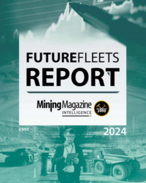After a quiet 12 months, Ernst and Young mining and metals leader Paul Murphy told MiningNews.Net the number of deals in the pipeline was starting to grow, with confidence returning to buyers and sellers.
Since the start of the year M&A volumes have progressed at a steady rate, but the past two months in particular have seen things shift gear.
“I think since March the number of announced deals has continued and picked up,” Murphy told MNN.
“By the time you factor in the impact of announced deals like Las Bambas or the Aquila deal, there seems to be quite a bit of momentum in terms of a sustained pick-up in M&A deals.”
Growing pipeline
Despite the good signs, the latest data from EY shows mining and metals deals are still down heavily on the past few years.
Globally there were 135 deals worth $US6.7 billion ($A7.25 billion) in the first quarter this year, down 31% and 67% respectively on the same time last year.
In Australia there were 45 deals worth $511.59 million, down 15% and 79% on Q1 2013.
Despite the low numbers, EY’s latest capital confidence barometer shows the mood is more positive among mining executives.
Nearly two-thirds of respondents expected global deal volumes to improve in the next 12 months, and 53% of companies said they had a pipeline of 2-3 deals in the making.
“Numerous key indicators as reflected in the capital confidence barometer tell us that confidence and appetite is coming back, but this has not yet translated into completed transactions,” Murphy said.
Changing times
The move that’s garnered the most attention this year has been Glencore Xstrata’s $5.85 billion sale of the Las Bambas copper development to a Chinese consortium led by MMG. Alongside this, Baosteel and Aurizon’s bid for Pilbara developer Aquila Resources has also turned heads.
Between them, these deals have highlighted most of the key themes to look out for in this next phase of mining M&A.
One of the most important messages to take from the deals is that China has not gone to sleep and despite some poor experiences, it’s not scared of taking on big development projects.
Along with that, Aurizon’s key position in the Aquila deal is sign of the more diverse set of investors likely to be involved in new deals.
“A lot of the players doing M&A deals these days are non-traditional miners,” Murphy said.
“We’re seeing the formation of expert-backed private funds, and you could even say Aurizon fits into that non-traditional category as well.
“As some of that expert-backed private capital starts to move we think it will create a bit of tension and anxiety in the M&A market and get things moving at an even faster rate.”
Well-known names and former executives from the big miners are leading development of these funds, which are on the prowl for new assets.
For the most part they’ve remained out of view, but QKR (run by ex-JPMorgan mining bankers Lloyd Pengilly and Roger Kennedy) reportedly has around $1 billion in committed funds.
Ex-Xstrata boss Mick Davis’ X2 Resources has also shown ambition for some of BHP Billiton’s assets.
Compared to their larger counterparts these funds are nimble and cashed up, and they’re likely to be responsible for more deals over the next few years.
“All the larger players are really going through a penance at the moment to prove they can responsibly manage capital, control costs and improve productivity,” Murphy told MNN.
“If anything, a lot of them are still in divestment mode where they’re optimising their portfolios and getting rid of assets that don’t make sense.
“We think it’s going to be another year or two until they’re given the green light to start to accumulate and acquire again.”
Break it down
Murphy said new deals were expected to involve more alternative arrangements, with the non-traditional investors helping drive this action.
“There’s no appetite any longer for $40 billion acquisitions,” he said.
“We’re definitely going to see more joint venture-type arrangements but I think they’re going to be JVs of different types of capital rather than different types of companies.”
Aquila is again the best example of this trend.
Rather than one miner acquiring another, the Aquila deal involves Baosteel, a downstream offtaker interested in the iron ore business, and Aurizon, an infrastructure player interested in rail development.
It’s this broken-down nature that looks set to characterise the next phase of activity.
“Instead of the whole industry owning all the resources, what we’ll see with this cycle is that with all the different sources of capital, we’ll see much greater balance in terms of who’s investing in what part of the sector and what part of mining risk they’re exposed to,” Murphy said.
























